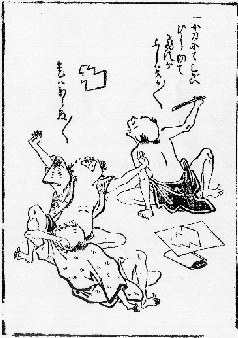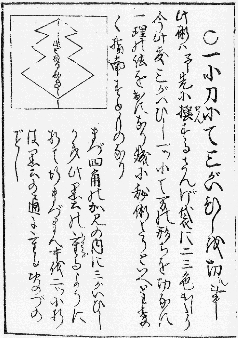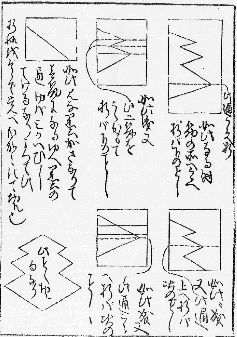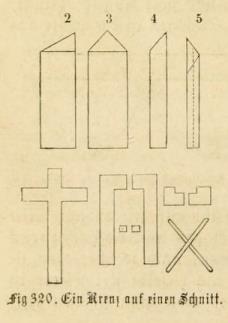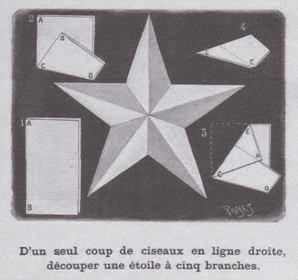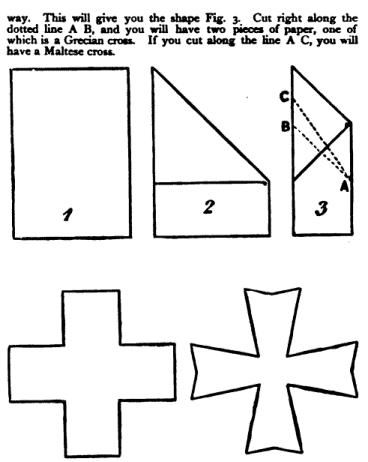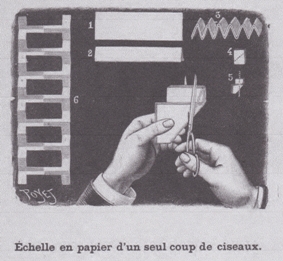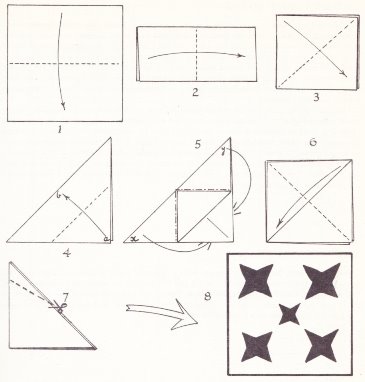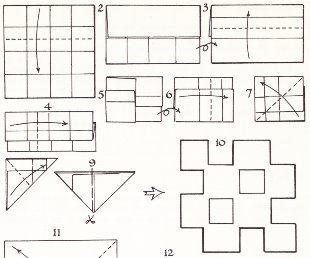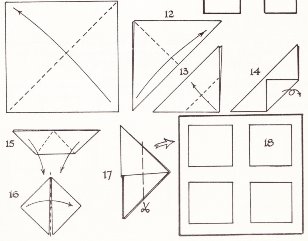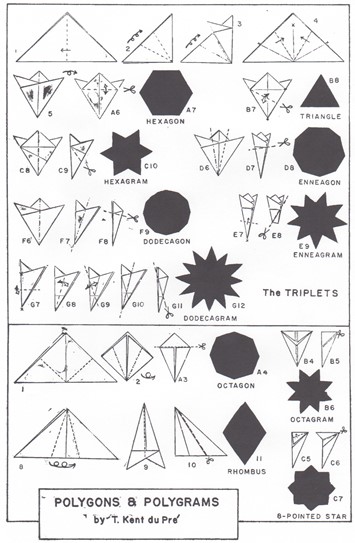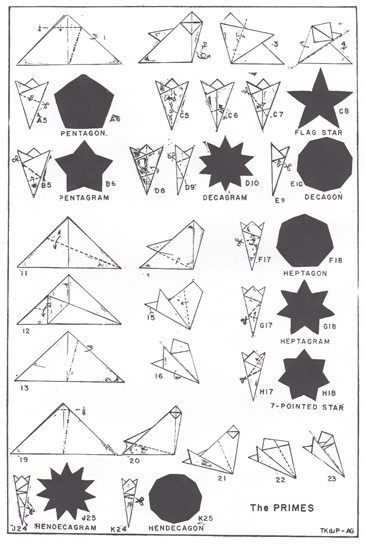| The Public Paperfolding History Project
Last updated 20/2/2024 x |
|||||||
| Fold and One Cut Designs | |||||||
| This
page is being used to collect information about the
history of Fold and One Cut Designs, in which the paper
is either folded in such a way that it is possible to
obtain a given shape with just a single straight cut or
in which the cut results in separation of the paper into
a number of identical or dissimilar forms. In the latter
instance the various forms are then sometimes combined
into a picture. Please contact me if you know that any of the information on this page is incorrect or if you know of important omissions. Thank you. Fold and one cut methods for creating regular polygons can be found in the following pages: How to Construct the Equilateral Triangle by Folding Paper How to Construct the Regular Pentagon by Folding Paper How to Construct the Regular Hexagon by Folding Paper How to Construct the Regular Heptagon by Folding Paper How to Construct the Regular Octagon by Folding Paper How to Construct the Regular Nonagon by Folding Paper Fold and one cut methods for obtaining stars have not been recorded (unless they appear in other contexts) since they can be created from the appropriate polygons simply by varying the angle of the cut. ********** 1721 The earliest known example of a Fold and One Cut Design (in fact a Fold and One Cut Design presented as a puzzle) occurs in the book 'Wakoku Chiyekurabe' (Mathematical Contests) by Kan Chu Sen which was published in Japan in 1721.
The target shape bears a distinct resemblance to the kamon (family badge) of the Ogasawara family shown below (see https://www.samurai-archives.com/crest5.html).
********** Fold and One Cut Latin Crosses / Altar / Ticket to Heaven - 1833 onwards
********** The Fold and One Cut Pentagram - 1873 onwards
********** Fold and One Cut Maltese Crosses - 1881 onwards
********** The Fold and One Cut Ladder - 1892 onwards
********** The Fold and One Cut Hexagram / Star of David - 1892 onwards ********** How to Divide a Square into Smaller Squares with a Single Cut - 1823 onwards ********** 1960 'Paper Folding Fun' by Robert Harbin, which was published by Oldbourne in London in 1960, explained several decorative fold and one cut effects. Seeing Stars
*** The Draught Board
*** The Window Frame
**********
********** 1966 'The Origamian' Vol 6: Issue 2 of Summer 1966 includes fold and one cut methods of creating polygons and polygrams up to the hendecagon and hendecagram.
********** |
|||||||
